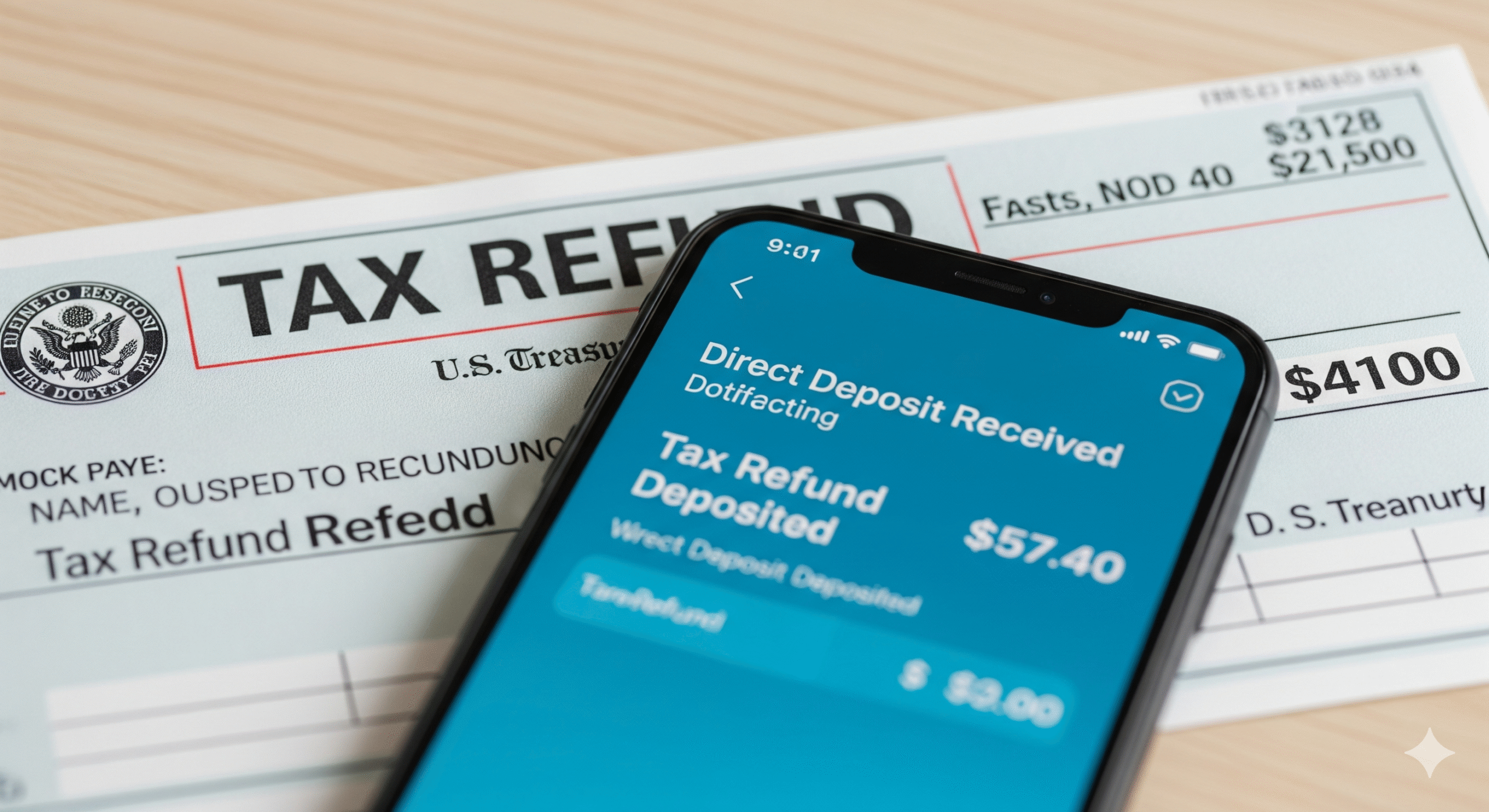
Every tax season, millions of Americans eagerly wait for one thing — their tax refund hitting the bank. For most households, this deposit feels like a mini “bonus check,” and in many cases, it helps cover bills, savings, or even vacations. But how do US tax refund bank deposits actually work? And what can you do to make sure your money arrives quickly and safely? Here’s the full breakdown.
What Is a Tax Refund Bank Deposit?
A tax refund is money the IRS returns if you paid more income tax than you owed during the year. Instead of mailing a paper check, most taxpayers now choose direct deposit into their checking or savings account. It’s the fastest and safest way to get your refund — and it’s free.
How Long Does It Take?
-
E-filers with direct deposit: usually get their refund in 7–21 days.
-
Paper filers: refunds can take 6–8 weeks or longer.
-
You can track the status using the IRS “Where’s My Refund?” tool or the IRS2Go app.
👉 Pro tip: Refunds are processed in cycles. Early filers who claim common credits like the Earned Income Tax Credit (EITC) or the Additional Child Tax Credit (ACTC) may see delays until mid-February due to anti-fraud laws.
Where Can Refunds Be Deposited?
The IRS lets you direct deposit into:
-
A checking or savings account at a U.S. bank or credit union
-
Some prepaid debit cards
-
Certain mobile wallets (like Cash App, PayPal, or Chime, if they provide routing/account numbers)
⚠️ Important rules:
-
Refunds cannot go to foreign accounts.
-
IRS only allows 3 refunds per bank account per year — after that, you’ll get a paper check.
-
Refunds must go into an account in your name (or your spouse’s for joint returns).
Why Do Refund Deposits Get Delayed?
Even with direct deposit, delays can happen. Common reasons include:
-
IRS needs to verify your identity or income
-
Errors in bank account or routing numbers
-
You owe back taxes, child support, or student loans (refund may be reduced or withheld)
-
Bank rejects the deposit (IRS will then mail you a paper check)
Are Refunds Taxable?
Refunds themselves are not taxable — they’re just your overpaid money coming back.
But if the IRS pays you interest on a delayed refund, that interest is taxable and must be reported on your next return.
Tips for Getting Your Refund Faster
-
E-file instead of mailing your return.
-
Choose direct deposit over a paper check.
-
Double-check your bank info (account & routing numbers).
-
File early, but not before IRS officially opens tax season (usually late January).
-
Use the IRS Where’s My Refund? tracker to monitor progress.
The Bottom Line
US tax refund bank deposits are the most reliable way to get your money back from the IRS. Most taxpayers see their cash in under three weeks — but mistakes, identity checks, or offsets can cause delays. The key is to file accurately, opt for direct deposit, and keep an eye on your refund status.
So, when that money hits your bank account, you’ll know you did everything right.
👉 For more updates on U.S. taxes, banking tips, and financial news, keep checking back — we’ve got you covered.